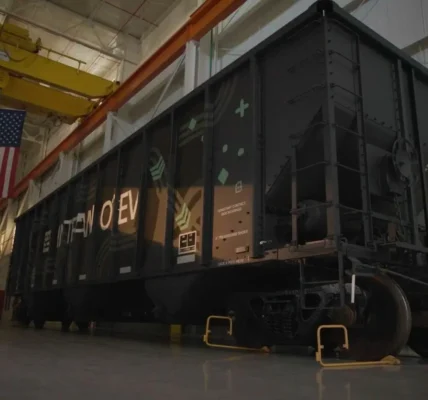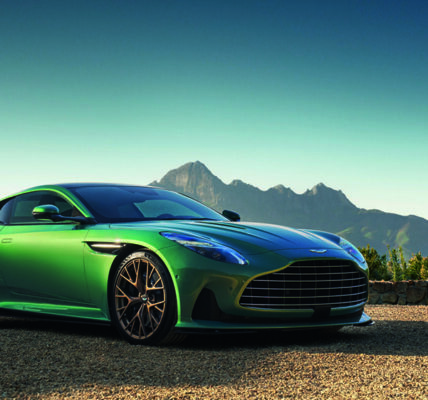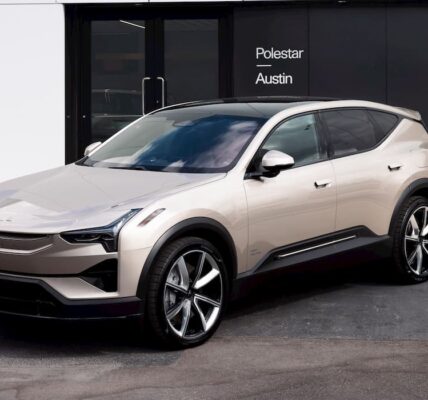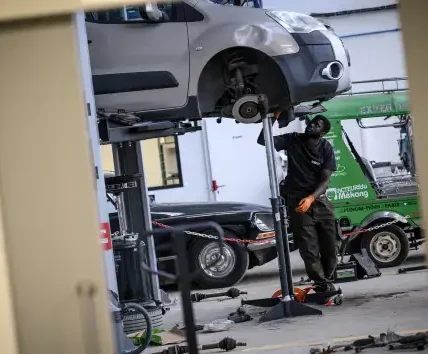On the eve of Memorial Day weekend, Ford CEO Jim Farley announced he would be joining Tesla CEO Elon Musk for a Twitter Spaces discussion, where the two would talk about “accelerating EV adoption,” and make an announcement.
That announcement turned out to be a big one: Starting next year, Ford EVs will have access to 12,000 Tesla Superchargers in North America, via a Tesla-supplied adapter. Then starting in 2025, all new Ford EVs will ship with Tesla’s NACS (North American Charging Standard) charging connector, as opposed to the CCS standard which most other EV automakers have been using.
“Working with Elon and his team, I’m really excited for our industry and for the Ford customers,” Ford CEO Jim Farley said during the Twitter Spaces event. “We think this is a huge move for our industry and all electric customers.”
Likewise Musk, who has been known to denigrate traditional automakers though has in the past shown an affinity for Ford, said, “I have a tremendous amount of respect for Ford as a company, and they make great vehicles,” adding “it’s an honor to be working with a great company like Ford.”
Farley cited the Tesla’s supercharger network’s ease of use and reliability as key differentiators for using the service. Ford did reiterate that its own BlueOval Charge Network of 10,000+ fast chargers would still be available, giving Ford owners more choice, and a big leg up on the competition with Tesla’s network on tap.
Reaction across the automotive world was mixed, but one thing was for certain: it was a shock.
“Ford blindsided the entire industry with this brilliant move and solidified its position as a leader in the transition to electric vehicles,” said Tom Moloughney, EV charging expert and senior editor at InsideEVs to Yahoo Finance. “The Ford/Tesla deal will cause some initial disruption in the industry, but it will prove to be good for the consumer in the long run.”
Wall Street is generally supportive of the deal as well, with Ford owners (and presumptive owners) receiving a big benefit that could help sell more of the company’s EVs.
“To the extent it helps Ford sell more EVs, it also reinforces the importance of getting to profitability on those vehicle sales,” Goldman analyst Mark Delaney wrote in a note to investors. “Ford discussed having EVs that can charge quickly (and have a smaller battery) as part of its strategy to improve user experience and profits at its recent investor day, and we view this step to enhance the charging network as a step toward that.”
“In terms of vehicles on the road and fast charge ports, NACS is the leading standard in the US,” Guidehouse Sr. Research Analyst Mike Austin told Yahoo Finance. “I think it’s a good move for Ford, or at least not a negative – everyone (Tesla and other automakers) will probably need an adapter one way or the other anyway – so getting access to Superchargers requires moving to NACS, it’s probably worth it.”
Even Treasury Secretary Pete Buttigieg expressed support for the Ford/Tesla deal as good for consumers.
“We’re really glad to see this deal and any deal that means more access for more drivers to more electric chargers,” Secretary Buttigieg said in an interview with Yahoo Finance this week. “We are on an aggressive journey to get to the president’s vision of half a million chargers by the end of the decade across America, and there’s already this remarkable charging network that Tesla has built. So for that to be accessible to more drivers is, I think, very positive news.”
Buttigieg continued that regardless of charger plug standard – CCS vs NACS or even the CHAdeMo standard that Nissan uses, the availability of adapters for interoperability will be crucial. Most importantly for consumers is for the sheer number of chargers to increase, and those networks are opened up to all users. Tesla has promised to open up more of its Supercharger network to other users by the end of next year, but the rollout is coming along slowly.
Not surprisingly, automakers that are tied to the CCS standard, as well as charging companies aligned with a more agnostic approach to charging standards, aren’t ready to anoint Ford’s tie-up with NACS as a game changer.
“GM believes that open charging networks and standards are the best way forward to enable EV adoption across the industry,” a GM spokesperson said to Yahoo Finance in a statement. “That’s why we joined with a group of companies and the SAE to develop and continue to refine an open connector standard in the Combined Charging System (CCS), which we believe is a truly universal solution available today for fast charging.”
“EVgo remains committed to Electric For All, and we continue to be ready to charge any and all EVs on our network, including Fords, Teslas, and dozens of other models,” EVgo said to Yahoo Finance in a statement. “We’re looking forward to learning more about how this partnership will be implemented.”
There is some concern from Tesla owners about Ford EV owners potentially clogging their Supercharger stalls in the future, but the high availability rate of Tesla’s chargers and relatively small user base of Ford EV owners should likely mitigate any concerns about availability.
Again, Wall Street is somewhat bullish on the deal for Tesla.
“Recall in our 2022 report that we sized the potential for Tesla opening its network more widely in the next few years (i.e. more than just Ford) at $1-$3 bn of incremental revenue (although Tesla wouldn’t necessarily capture all of this),” Goldman analyst Mark Delaney wrote in his note. “We believe the news is a modest incremental positive for Tesla as it will likely bring in additional profits and help Tesla to sustain the most robust charging network, albeit with some risk of fewer vehicle sales.”
“The main upside for Tesla is that it helps increase Supercharger revenue (and utilization). Compared to cars this is low capital and steady revenue, and opening it up to non-Tesla vehicles effectively turns it into a standalone business unit,” Guidehouse’s Mike Austin said.
EV charging expert Tom Moloughney was even more effusive in what this deal means for Tesla.
“Tesla isn’t just a car company, it’s an energy provider, and as such, the more customers the better,” Moloughney told Yahoo Finance. “As long as Tesla continues to install Superchargers as it has been, the Supercharger experience will remain the best charging experience in the industry, even if other OEMs also join in.”
Will NACS be the new standard?
The next logical question following Ford’s move: Will others follow suit and effectively make the NACS standard the main system and plug going forward?
“The CCS is a great standard, but it was pretty much done by kind of a committee, and I think GM and others are going to have a big choice to make,” Ford CEO Jim Farley. “Do they want to have fast charging for customers? Or do they want to stick to their standard and have less charging?”
As Buttigieg pointed out, if adapters for various plugs exist then any charger will do, however that will be a long time coming, and there is no guarantee the adapters will work as seamlessly as native plugs work now.
The Tesla Supercharger experience is true “plug and play,” meaning once the plug is connected to the car, the Supercharger system “knows” the car, has billing information already on hand, and begins charging. With other networks an app or charger interface must be dealt with, a specific charger selected in the interface, sometimes payment info must be entered, etc., before charging begins.
As the EV battlefield grows more intense, it’s possible other manufacturers may hop over to the NACS side to get a better user experience, but that would also mean joining forces with Tesla – a bitter pill to swallow for traditional automakers who have felt under attack from the Musk-led company.
For now, it seems Tesla’s NACS is in a better position for wider adoption.
“It’s possible,” Mike Austin said about whether NACS could be the new standard in the US, “but I think it’s too soon to tell – the Ford vehicles with NACS ports won’t come out until 2025 and it will take a few years after that for all of its EVs to switch over. It’s also possible that Ford could offer both ports.”
Moloughney offered a similar sentiment, but added the tide may be turning.








